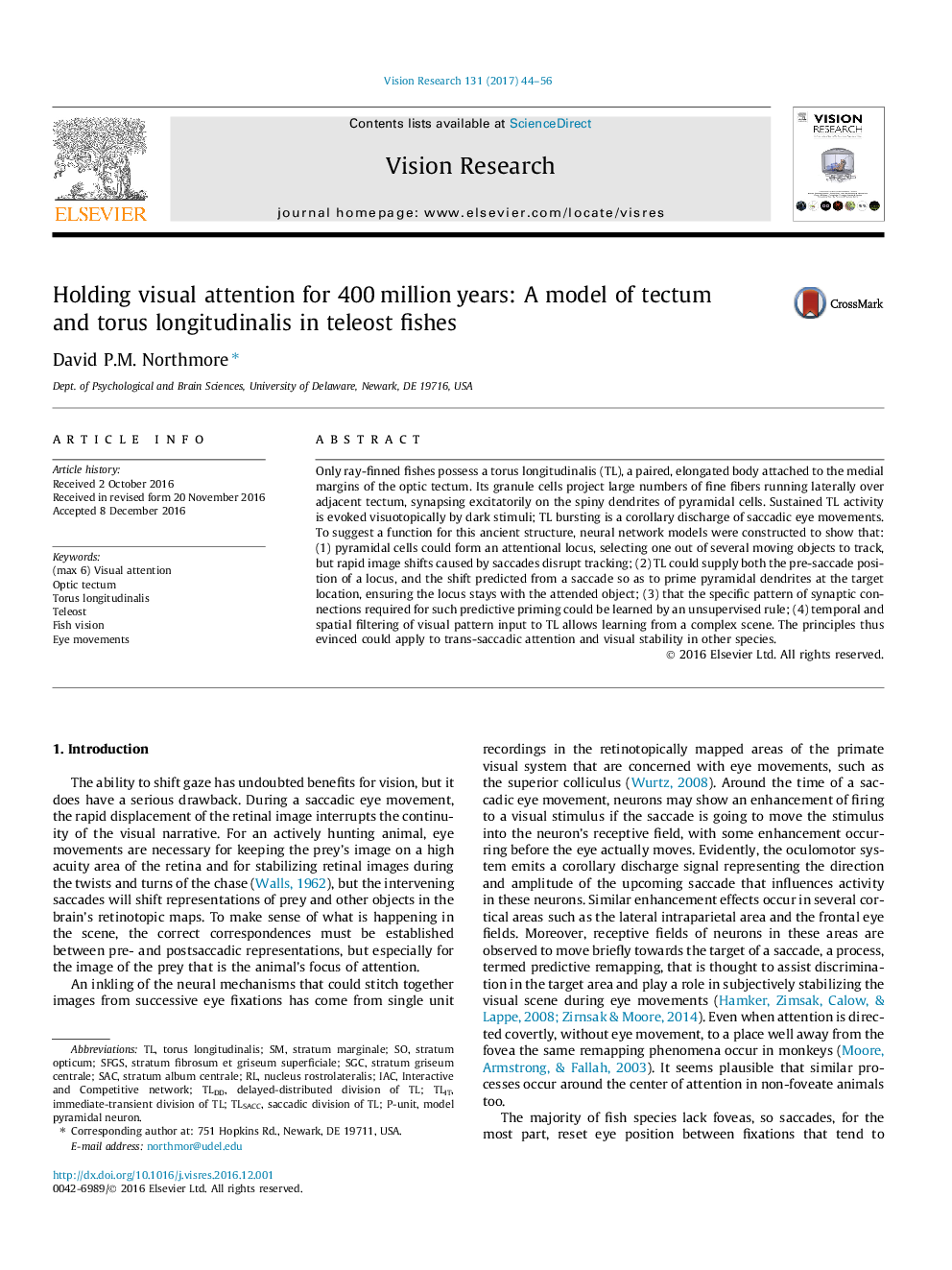| Article ID | Journal | Published Year | Pages | File Type |
|---|---|---|---|---|
| 5705943 | Vision Research | 2017 | 13 Pages |
Abstract
Only ray-finned fishes possess a torus longitudinalis (TL), a paired, elongated body attached to the medial margins of the optic tectum. Its granule cells project large numbers of fine fibers running laterally over adjacent tectum, synapsing excitatorily on the spiny dendrites of pyramidal cells. Sustained TL activity is evoked visuotopically by dark stimuli; TL bursting is a corollary discharge of saccadic eye movements. To suggest a function for this ancient structure, neural network models were constructed to show that: (1) pyramidal cells could form an attentional locus, selecting one out of several moving objects to track, but rapid image shifts caused by saccades disrupt tracking; (2) TL could supply both the pre-saccade position of a locus, and the shift predicted from a saccade so as to prime pyramidal dendrites at the target location, ensuring the locus stays with the attended object; (3) that the specific pattern of synaptic connections required for such predictive priming could be learned by an unsupervised rule; (4) temporal and spatial filtering of visual pattern input to TL allows learning from a complex scene. The principles thus evinced could apply to trans-saccadic attention and visual stability in other species.
Keywords
Related Topics
Life Sciences
Neuroscience
Sensory Systems
Authors
David P.M. Northmore,
